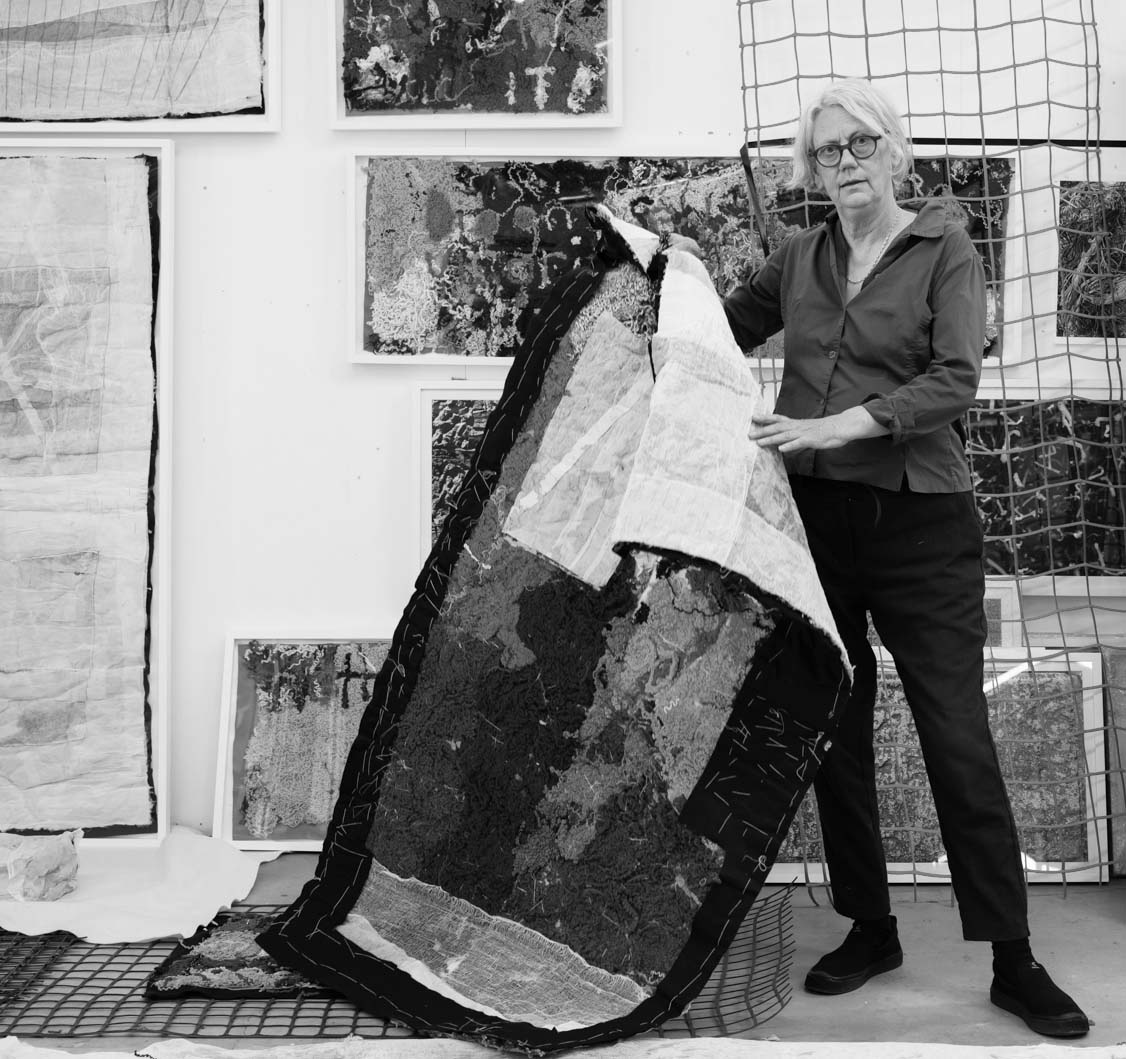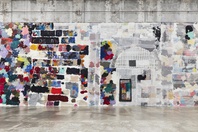Elizabeth Day
Gadigal Country, Sydney and Nuenonne/Bruny Island, Tasmania
2023
Displayed 2023 at Carriageworks

Elizabeth Day
Born 1954, Wigan, United Kingdom.
Lives and works Gadigal Country, Sydney and Nuenonne/Bruny Island, Tasmania
For over thirty years, Elizabeth Day has worked as a community, site-based and studio artist, while also being a prison and mental health care worker. She develops creative projects in spaces which have been marginalised from public view, such as hospitals and prisons, or produces works that reference these spaces. Day’s current research and artistic project The Prison on the Landscape (2017–ongoing) relates to the ongoing impact of colonial institutions. She is co-curator at Boom Gate Gallery, Long Bay Correctional Complex, Sydney.
Photograph: Jacquie Manning
Artist text
by Seán Kelly
Elizabeth Day identifies the ‘prison on the landscape’ as an abiding image in the establishment of colonial Australia. It is a motif lodged firmly in the artist’s consciousness. Prisons and other places of incarceration still inhabit our landscapes, haunting the present.
In The Flow of Form: There's a Reason Beyond a Reason. Beyond That There's a Reason (1797 Parramatta Gaol), Carriageworks, Redfern (2023), Day addresses the damage done through the establishment of places of incarceration in Australia, in particular the gaol and the asylum. She considers the trans-generational trauma which grew within and out from these sites, persisting into the present. These are spaces she has worked in and inhabited over time.
The ‘performative textile,’ as Day describes her work, engages these traumatised spaces, such as Parramatta Gaol, and their stories in a form of ‘theatrical’ presentation of what is for her the ‘crime scene’ of Australian history. This then is the canvas on which the sad, cruel history of these places is painted. These are the images adorning the walls of our imagination, which we carry forward – or perhaps drag with us – into the future.
Revelation and resolution require confrontation. How does one find those threads of experiential history, of personal stories, of trans-generational damage? Which threads are broken, which chafed thin, and which still tied tight, knotted into our very being? How can they be untangled, teased out, rejoined, and how can they be read?
Experiencing that continuum, as a force both alive and active in the present, is more than objective research. Day is aware that such enquiry, which attempts to understand events, incidents, stories, and feelings, is a deeply intimate and personal process and must proceed back from the present, impelled in part by present pain. Much is at stake here because the road back requires that the traveller willingly enter forbidding (even forbidden) places. To understand pain, one must engage with it, let it in, and feel it.
Trans-generational pain is a poison at the heart of people, which can affect families, damage individuals, and send them into the world with inherited, and often unresolved, issues. Day’s background, like many others, contains suppressed histories.
Day describes her process as ‘unravelling.’ This refers to her methodology, but also suggests deeper meanings of the term: at once coming undone (the effect of trauma) and undoing (as form of healing), at once poison and cure (the pharmakon). Op shop garments are unravelled. They are then reconstituted as fabric panels, utilising selected significant utterances in texts she has gathered, such as: ‘Damage was passed on from generation to generation.' Day describes her use of stitching as at once ‘drawing’ and writing, and the broader composition of the fabric elements as ‘painting.’ In this way, she inscribes abstract expressionism within a feminist ‘text’ that privileges the traditional domestic-skill practices of women and Louise Bourgeois’ idea of art as restoration, as repair.
Artist's acknowledgements
I thank Anna Gibbs, Nola Farman, Ann Finegan, Sherri Hilario and others for their support and their unravelling of old garments; Jennifer van Ratingen, Claire Taylor and Peter Citrino for their studio assistance, and to the staff at Tempe Tip Salvos. Thanks also to Articulate project space for their enabling of spatial practices in Sydney over many years and to Conny Dietzschold Gallery; to Anne Wilson for her support of my current body of work; to Seán Kelly for his text; and much gratitude to my partner Alan Cholodenko.


